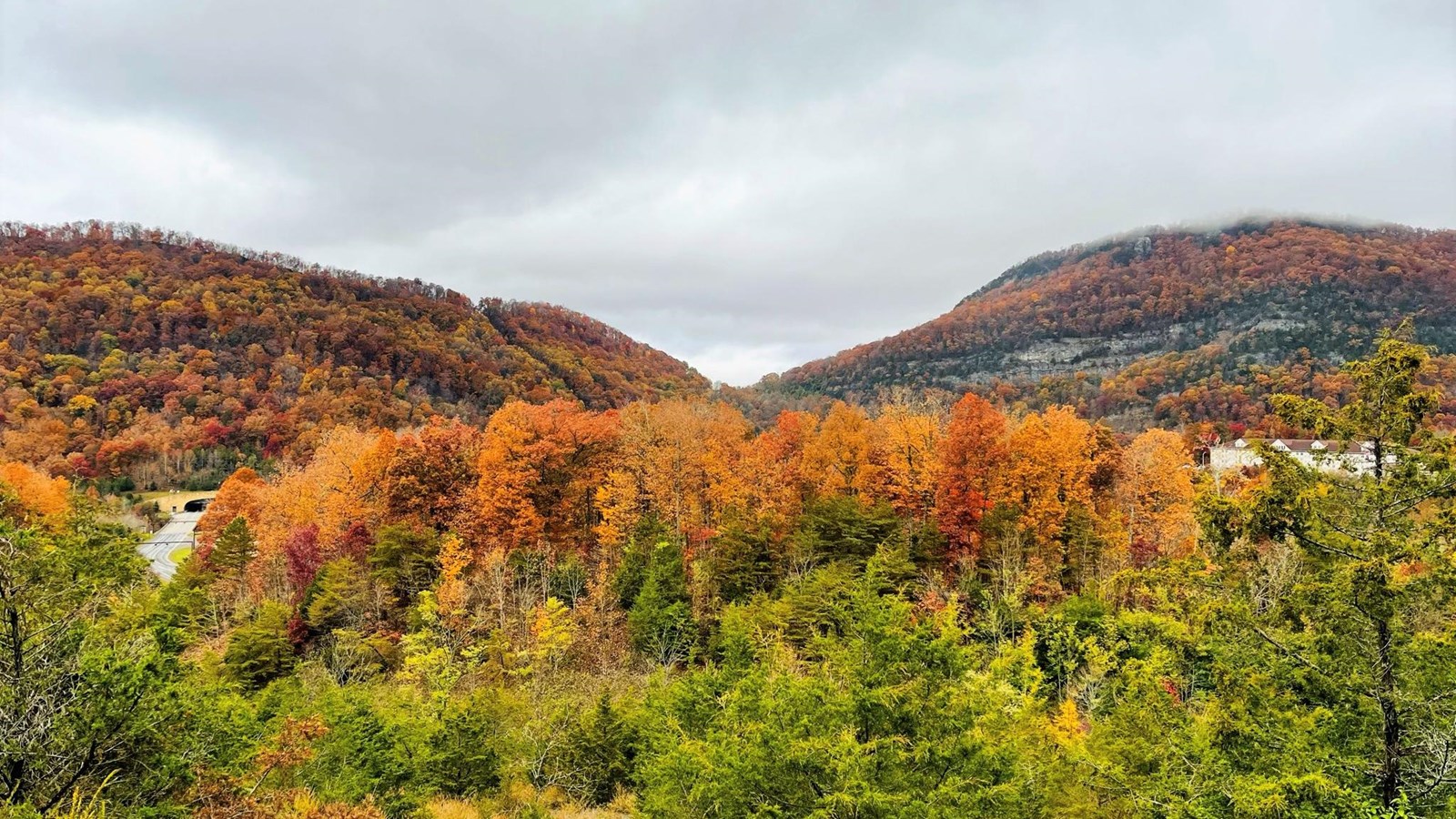Last updated: February 27, 2024
Place
Cumberland Gap

NPS
Quick Facts
Location:
Middlesboro, KY
Significance:
historic
Designation:
Historic Register
For thousands of years, a multitude of people and animals have journeyed through the Cumberland Gap. A combination of geological factors made this critically important transportation link possible. As the Cumberland Mountain formed Yellow Creek cut through the mountain creating a notch in the mountain at the same time it was rising. The mountain began to rise faster than the creek could erode, causing the creek to change course.
Not long after the gap formed, animals began traveling through the gap on their way north, especially bison. The bison blazed a trail through the gap, as they went north in search of saltlicks. Saltlicks are deposits of salt and other minerals that rise to the surface, that animals need to supplement their diets, aiding in their survival. As bison traveled north, early humans observed their movements and followed them through the gap.
While we don’t know when the first people journeyed through the gap, humans lived in this area as early as 8000 thousand years ago. Other people moved from the west through the gap. These people known as the Mississippian people built large mounds in Lee County, Virginia around 1200 CE. Their descendants continued to live near the gap and included the Cherokee, Shawnee, and Creek. These tribes used the gap for hunting, trade, and settlement. As European colonists began moving through the gap, they clashed with many of these people over this tribal land. Eventually, they pushed these people out as they settled west of the gap.
During the 1700s, European colonists searched for a way west through the Cumberland Mountains. The first European to document his journey through the gap was Thomas Walker. In 1750, the Virginia Loyal Land Company sent Thomas Walker to find a pass into western Virginia (now Kentucky). Walker journeyed through the gap and named the mountain after Prince William, the Duke of Cumberland. Walker, though, argued the gap was not the best path westward. Nineteen years later, Daniel Boone came to a different conclusion. Boone heard about the gap from a friend and travelled through it on a hunting expedition. He told others of his journey and in 1775 land speculator Richard Henderson paid him to blaze a trail through the gap for settlement. This path known as the Wilderness Road allowed approximately 200,000 and 300,000 European-American colonists to travel through the gap westward.
Not long after the gap formed, animals began traveling through the gap on their way north, especially bison. The bison blazed a trail through the gap, as they went north in search of saltlicks. Saltlicks are deposits of salt and other minerals that rise to the surface, that animals need to supplement their diets, aiding in their survival. As bison traveled north, early humans observed their movements and followed them through the gap.
While we don’t know when the first people journeyed through the gap, humans lived in this area as early as 8000 thousand years ago. Other people moved from the west through the gap. These people known as the Mississippian people built large mounds in Lee County, Virginia around 1200 CE. Their descendants continued to live near the gap and included the Cherokee, Shawnee, and Creek. These tribes used the gap for hunting, trade, and settlement. As European colonists began moving through the gap, they clashed with many of these people over this tribal land. Eventually, they pushed these people out as they settled west of the gap.
During the 1700s, European colonists searched for a way west through the Cumberland Mountains. The first European to document his journey through the gap was Thomas Walker. In 1750, the Virginia Loyal Land Company sent Thomas Walker to find a pass into western Virginia (now Kentucky). Walker journeyed through the gap and named the mountain after Prince William, the Duke of Cumberland. Walker, though, argued the gap was not the best path westward. Nineteen years later, Daniel Boone came to a different conclusion. Boone heard about the gap from a friend and travelled through it on a hunting expedition. He told others of his journey and in 1775 land speculator Richard Henderson paid him to blaze a trail through the gap for settlement. This path known as the Wilderness Road allowed approximately 200,000 and 300,000 European-American colonists to travel through the gap westward.
